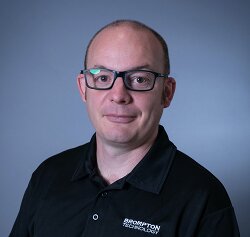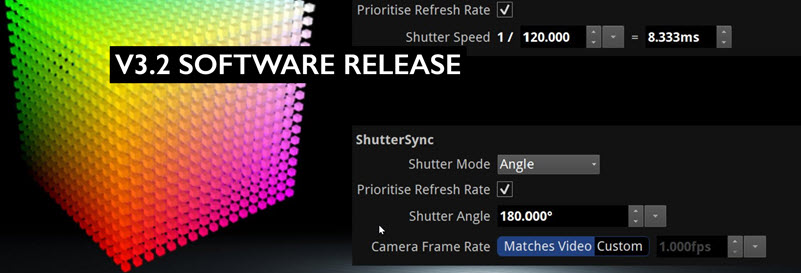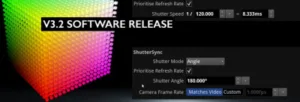There are some companies that seem around an industry that I never seemed to catch up with, even when I was attending a lot of events. Often they are one step removed from the display as it is seen. This week I made the effort to catch up with them – Brompton Technology – a maker of processors for LED walls.
 Brompton Technology – not the renowned maker of folding bikes whose engineering is so good that an ex-Siemens engineer I know in Germany described one as ‘almost perfect’ and high praise indeed – is the company whose signal processors sit behind a lot of the best looking large LED walls. Those that use its processors are usually happy to boast about it.
Brompton Technology – not the renowned maker of folding bikes whose engineering is so good that an ex-Siemens engineer I know in Germany described one as ‘almost perfect’ and high praise indeed – is the company whose signal processors sit behind a lot of the best looking large LED walls. Those that use its processors are usually happy to boast about it.
I have bumped into the firm at events such as ProLight & Sound in Frankfurt, but have never spent time with them. However, I was curious about the firm’s success so I arranged an interview with Rob Fowler, Brompton’s Director of Business Development.
“So”, I asked “how can a company from the UK be a key player in such an industry that is so based in China and elsewhere? The UK, after all, has not got a great recent history in electronics hardware”.
Fowler said that it is the conventional wisdom that ‘you can’t be competitive unless you are in China’, but that is not true, especially in some markets. One of the keys to Brompton’s success has been its visibility and success in markets where, as he put it “failure is not an option”. As he said, if the LED in your shopping mall has a problem, that’s a shame. However, if you are presenting the Oscars or the Olympics, a problem in the display can be ‘career limiting’. That helps to raise the discussion above simply price and features.
Brompton’s parent company, Carallon Ltd, likes to work in ‘difficult to fix problems’. This is where product longevity, great quality and excellent technical support can make a real difference. For example, the company continually updates the software on its products at no cost and some products that have been in the market for 10 years are still supported with upgrades and may have twice the performance they had when new because of this. In live events, really good and timely support is critical and in recent years the firm has developed support and customer backup in Los Angeles, USA, China and Taiwan, as well as in London. That means 24 hour support and local language support.
Fowler also highlighted the tight integration of design, manufacture and support in the UK that means that problems can be identified, fixed and rolled out very quickly.
Now, live events have not been a growth market for the last couple of years, but there has been a new application, that of virtual production for TV and cinema. In many ways, the needs there for exceptional video quality and good support are also critical. LED ‘volumes’ are very expensive to rent or buy, so downtime is not a good thing. Many of Brompton’s existing customers in the rental and staging market have moved into this area and the firm has been able to do a lot to support it.
Calibration of displays is critical to setting them up initially, but also to maintaining long term high quality and Fowler is very proud of the work it has done in this area – going as far as to make its own design of calibration camera to ensure maximum performance. It has also developed external API access to its processors and this means the hardware can be processed from existing industry tools such as Pomfort’s LiveGrade – a tool used by content creators. That means that the colour performance can be controlled in an LED volume using real time controls that grading experts can recognise. Support of HDR has been critical and has driven new demands from users.
Fowler said that virtual production is not always a good solution, but often is when compared to location filming. The acceptance of the idea often comes from the cinematographers but VFX experts and DITs (Digital Imaging Technicians) are also important. Although some have suggested that there has been a ‘bubble’ in building virtual production facilities, he doesn’t believe that it will slow a lot as the pandemic dies down. As the tools develop and there are more people that understand them, the applications can multiply. Just as theatre lighting migrated into shopping malls, he sees virtual production techniques getting to high end company meetings, exhibitions etc.
 Brompton’s ShutterSync technology allows more creative freedom in content capture.
Brompton’s ShutterSync technology allows more creative freedom in content capture.
In April 2021, the firm introduced a new and free software upgrade that allowed the adjustment of the LED in a production to have its refresh adjusted to match the cameras being used. That is the opposite way round compared to other systems where the camera has to be adjusted to match to the display – limiting the creative choices of directors of photography. The upgrade also allowed the use of custom 3D LUTs for better colour management.
We had a quick discussion about colour gamuts. As we have heard from elsewhere, Rec 2020 containers for video data are becoming ubiquitous. Brompton has developed tools such as displays that can indicate ‘out of gamut’ colours to help content developers to optimise their display performance. We had a fascinating discussion about challenges of colour, metamerism etc, but I’m not sure that illuminated much!
Analyst Comments
As Fowler explained Brompton’s philosophy on support and updates, I was reminded of a favourite product of mine. I have a Line6 Helix music (mainly guitar) processor. The hardware design was released in 2015 and is still being sold today. It’s based on DSPs and digital hardware, so you might think it would need an update. However, it was built to give a good level of performance, but with ‘room for expansion’. It has been continually updated with free software updates that have really added a huge amount of functionality. It has backed that up with a great reputation for hardware support (in and out of warranty) and great technical help – some of its technicians take part in user groups to help users.
Musicians, like event producers, cannot afford for equipment not to work and Line6 (now part of Yamaha) has a huge level of loyalty from its user base.
Brompton seems to be adopting the same strategy – “more power to their elbow” I say (as we say in the UK). (BR)


